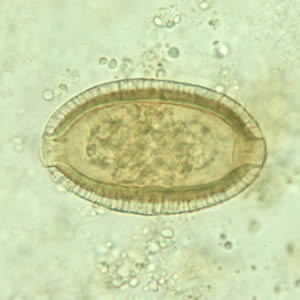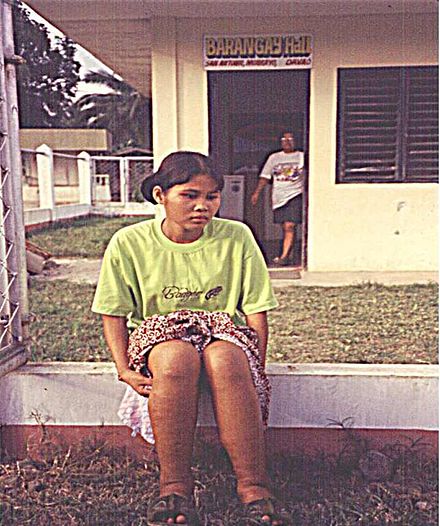Intestinal capillariasis
| Capillariasis | |
| Classification and external resources | |

| |
|---|---|
| Capillaria philippinensis egg | |
| ICD-10 | B81.1 |
| ICD-9 | 127.5 |
| DiseasesDB | 33051 |
Editor-In-Chief: C. Michael Gibson, M.S., M.D. [1]
Overview
Capillariasis is a disease in the group of helminthiasis diseases caused by the nematode Capillaria philippinensis.
Symptoms

Symptoms in infested humans include watery diarrhea, abdominal pain, edema, weight loss, borborygmus (stomach growling), and depressed levels of potassium and albumin in the blood. In humans, the parasites damage the cells of the intestinal wall. This damage interferes with the absorption of nutrients and the maintenance of a proper electrolyte balance. Untreated C. philippinensis infestations are often fatal.
Diagnosis
Diagnosis usually involves finding the eggs and/or adults of C. philippinensis in stool samples.
Treatment and prevention
Anthelmintics such as mebendazole and albendazole have been reported to eliminate infestation of humans more effectively than thiabendazole.[1]
Prevention is as simple as avoiding eating small, whole, uncooked fish. However, in C. philippinensis endemic areas, such dietary habits are common and have been practiced for many generations.
Antimicrobial Regimen
- Preferred regimen: Albendazole 400 mg/day PO for 10 days
- Alternative regimen: Mebendazole 200 mg PO bid for 20 days
References
- ↑ Hwang, K.P., T.E. Wang, T.C. Liou, S.C. Lin, C.R. Kao, T.Y. Wang and K.K. Pang (2004) "Clinical features of human intestinal capillariasis in Taiwan." World Journal of Gastroenterology 10(16):2391-2393.
- ↑ Cross, J. H. (1992-04). "Intestinal capillariasis". Clinical Microbiology Reviews. 5 (2): 120–129. ISSN 0893-8512. PMC 358231. PMID 1576584. Check date values in:
|date=(help) - ↑ Attia, Rasha A. H.; Tolba, Mohammed E. M.; Yones, Doaa A.; Bakir, Hanaa Y.; Eldeek, Hanan E. M.; Kamel, Shereef (2012-01). "Capillaria philippinensis in Upper Egypt: has it become endemic?". The American Journal of Tropical Medicine and Hygiene. 86 (1): 126–133. doi:10.4269/ajtmh.2012.11-0321. ISSN 1476-1645. PMC 3247121. PMID 22232463. Check date values in:
|date=(help) - ↑ Gilbert, David (2015). The Sanford guide to antimicrobial therapy. Sperryville, Va: Antimicrobial Therapy. ISBN 978-1930808843.